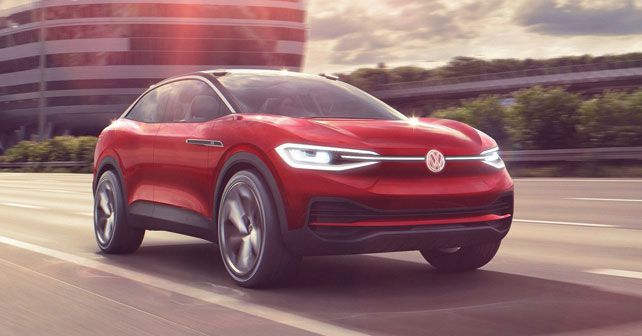
Jens ponders the future amidst all the buzz from the Frankfurt Motor Show – hypercars from Mercedes, fully autonomous vehicles from Audi, electric cars from the Volkswagen Group and surprises from China.
Most carmakers had spilled the beans before the Frankfurt motor show. In the race to be placed prominently in the auto show reporting, pictures and info was disseminated well before the start of the show – and, therefore, it was low on surprises.
One of the main attractions, however, remained under the lid. The AMG Project One – the “hypercar” that was pushed by AMG chief Tobias Moers – will be not only extremely fast but also extremely efficient. Contrast this with another hypercar, the Bugatti Chiron. The Bugatti is betting on sheer engine size and power. Both approaches are fascinating, but the AMG’s is arguably more forward-looking. The production run of the AMG will be just 275 units. I hope the technology transfer from Formula One doesn’t stop with the AMG Project One, but will continue downwards.
Another surprise came from Audi. The Aicon, a concept, which is not about driving anymore, but about being driven. As a fully autonomous car, it does entirely without pedals and a steering wheel – and this opened great possibilities for Marc Lichte’s team to focus on the interior. The exterior is starkly “reduced.” There’s an absence of décor, and conventional head-and-taillights are replaced with OLED screens. The era of ultra-precise, laser-sharp headlights will come to an end if autonomous cars ever prevail.
Another example of an autonomous car is the concept i Vision Dynamics by BMW. Its shape is rather generic, the “Hofmeister kink” in the C-pillar has virtually disappeared, and the only things that identify it as a BMW are the i8-inspired taillights and the massive, vertical “kidneys” upfront. The interior of this concept is still invisible. For all the autonomous driving capability, BMW chief Harald Krüger promises it will provide a sporty feel.
At the Volkswagen Group, platform sharing is more visible than ever on the fully electric VW I.D. Crozz and the Skoda Vision E. They show brand-specific variations of their fully electric platform, but they are surprisingly close to each other. Yes, electrification offers new design freedoms, but economies of scale still apply.
Conventional models
The brave new world of electrified pods and lounges may be just around the corner (although I doubt it), but there were a few conventional approaches as well – such as the 115-horsepower Volkswagen Up GTI. Its purist approach conveys everything an enthusiast needs – a direct and unfiltered driving experience, light weight and clean design. Those that have driven it already are smiling.
And there are some interesting options for those who still love their large SUVs, such as the new BMW X7 – shown in the form of a glamorous concept car that’s close to the 2018 production car. The design is cold and elegant, and we can imagine a powerful V8 under the hood, or the hybridized in-line 6 that BMW’s hinting at.
Jaguar Land Rover is speaking much about electrification – every new car from 2020 onwards will be “electrified” (although by a definition that requires no more than mild hybridisation). But before that, they are launching the awesome Land Rover Discovery SVX – with a supercharged 525-horsepower V8.
The Porsche Cayenne can do everything. There will be three gasoline engines and plug-in hybrids. The diesel is missing so far, and Porsche refuses to confirm if they’ll bring the V6 and V8 TDI’s to market, but if they actually kill these fantastic engines the competition won’t believe their luck.
Attack from China
Chinese brands are betting on SUVs as well, but with differing strategies. Great Wall has decided not to bring their mainstream brand to Europe, but to launch their luxury brand Wey. The two SUV models, VV5s und VV7s, are beautifully executed – just like the plug-in hybrid called the P8. If the technology delivers what the design promises, they would be a good fit in Europe.
Chery is following the opposite approach. Instead of launching Qoros in Europe, the premium brand of which they own 50%, they are betting on their mass-market brand Chery. Both the small and the mid-size SUVs that Chery showcased have sister models at Qoros. The Qoros versions are not just better built, they also look better – so we’re curious to see what Chery’s market positioning will be in Europe.
And Borgward, a long-defunct German premium brand resurrected by the Chinese, delivers a real stunner with the fully electric Isabella Concept. It’s an indication of the brand’s future design language, created by former Mini chef designer Anders Warming. But they don’t want to wait. The European market launch of the current BX5, BX6 and BX7 models, designed before Warming joined Borgward, is very near.
This is China’s first serious move on the European market, finally with convincing cars. And their game is easier than ever, attacking a European auto industry that is still shaken by the diesel scandal, uncertain about the viability of the grandiose electric and autonomous visions, and increasingly bereft of political support.























Write your Comment